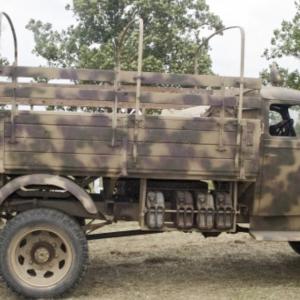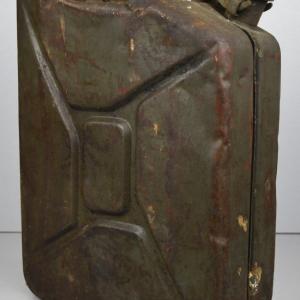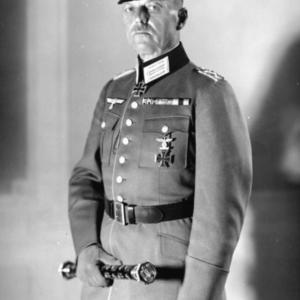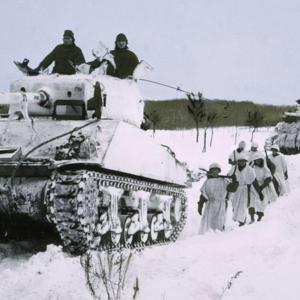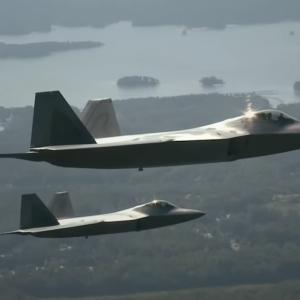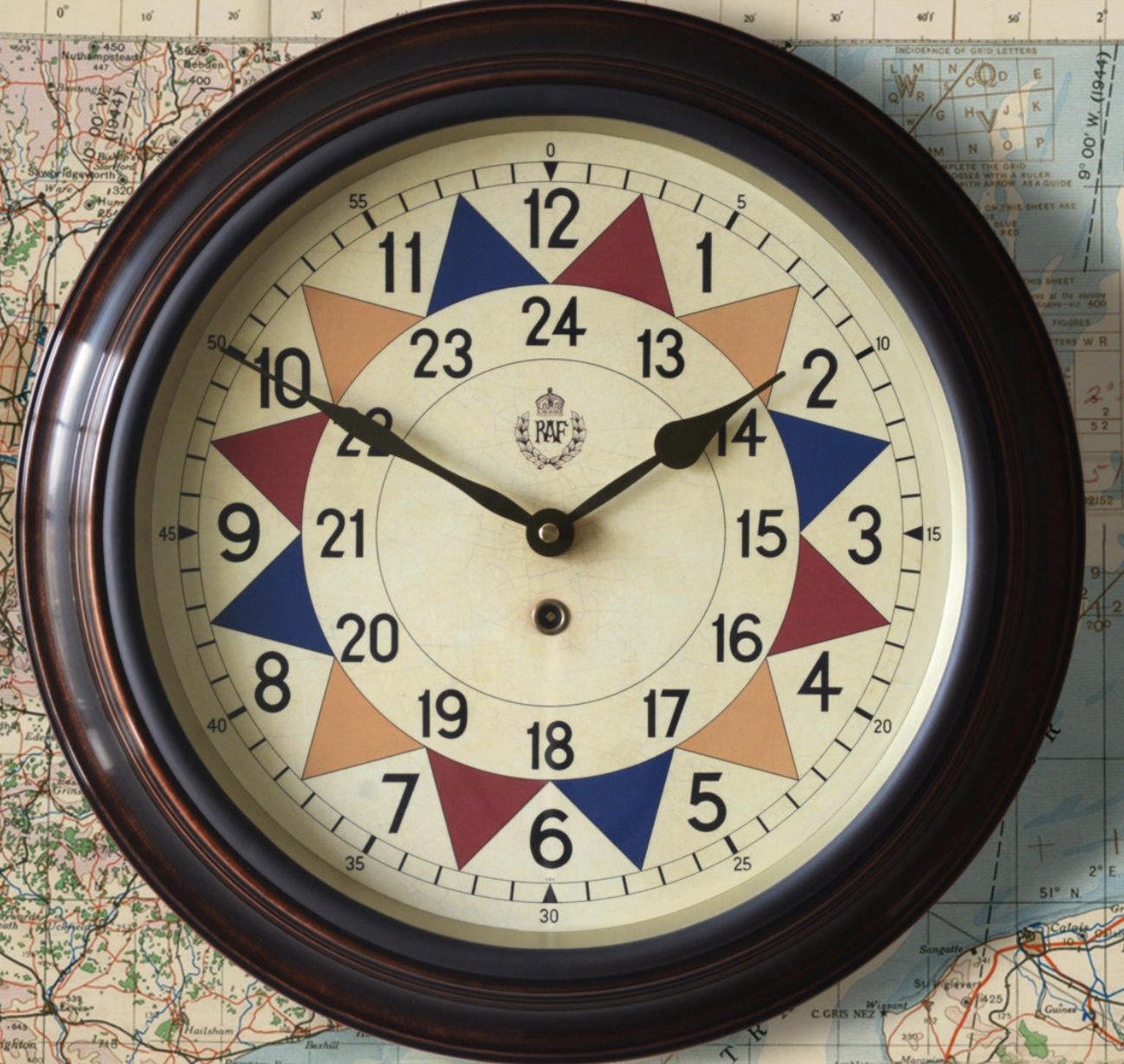
Sector Clock
During the Second World War, the Royal Air Force (RAF) developed and employed a highly efficient system for coordinating the defense of British airspace. Central to this system was the sector clock, a distinctive timepiece that played a vital role in the operations rooms of Fighter Command and other RAF control centres. These clocks were not merely instruments for telling time; they were essential tools used in tracking and directing aerial engagements with precision and clarity.
The RAF sector clock is instantly recognizable by its unique design. Unlike conventional clocks, its face was divided into five-minute segments, each colored red, yellow, or blue, in a repeating pattern around the dial. These colors were more than just decorative; they served a crucial purpose in managing the flow of information within the control room. Operators would use these colored segments to log and track the position and movement of aircraft in real time. Reports of sightings or interceptions would be marked with counters or indicators corresponding to the color of the segment in which the information was received. This system made it possible to visualize how long it had been since a report came in, which helped in assessing its freshness and tactical relevance. The rotating minute hand would pass through the colored bands, allowing controllers to easily determine the age of information at a glance and enabling rapid decision-making in the heat of battle.
This method of time-color coding was particularly important in the context of the Dowding system, the pioneering integrated air defense network named after Air Chief Marshal Sir Hugh Dowding. The Dowding system was the first of its kind in the world, integrating radar technology, ground observers, and radio communication into a cohesive command and control structure. The sector clock acted as a timekeeping anchor in this system. As radar stations and the Royal Observer Corps reported enemy aircraft movements, the information was relayed to filter rooms and subsequently to sector control rooms, where it was plotted on large maps. The colored time segments on the clock ensured that everyone involved in the chain of command could instantly correlate visual markers on the plotting table with the time they were received.
The design of the sector clock is credited to the RAF and was developed to serve the specific needs of air defense operations during wartime. Although no single individual is known to have claimed authorship of the design, its development can be seen as a collaborative response to the practical challenges faced by Fighter Command. The simplicity and effectiveness of the color-coded time system suggest a design born from direct operational necessity rather than aesthetic concerns.
Manufacture of the clocks was undertaken by several British companies, among the most prominent being F. W. Elliott Ltd and the renowned clockmaker Smiths. These companies produced both mechanical and, later, electric versions of the sector clock. The mechanical models typically featured an eight-day movement and were built to robust specifications, with a dial diameter of around 14 inches. The clock face bore the RAF crest, reinforcing its official use, and was enclosed in a solid wooden case, often painted black or dark brown. Over time, slight variations emerged in the design, such as the arrangement of colors or the style of numerals, but the essential function remained unchanged.
These clocks were not limited to RAF operations rooms alone. Similar timepieces were also adopted by other Allied forces and could be found in naval and air coordination centers where synchronized timing and information tracking were crucial. After the war, many sector clocks were retired or repurposed, but some remained in use during the early Cold War period, a testament to the enduring utility of their design.
Today, RAF sector clocks are highly prized by collectors and historians alike, not only for their distinctive appearance but for their symbolic role in the defense of Britain during one of its most critical periods. They represent a fusion of design, function, and necessity—an example of how even something as seemingly mundane as a clock can become a linchpin in the machinery of national defense.

